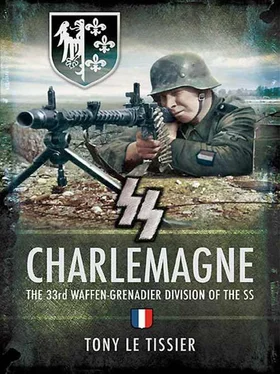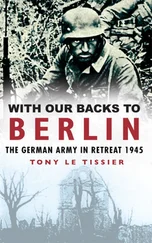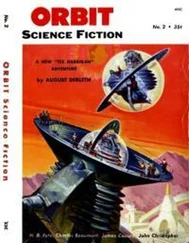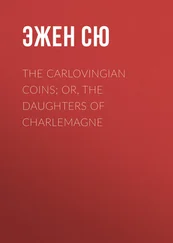A plethora of collaborationist political movements arose in the Paris area. The principal parties concerned were the Mouvement Social Révolutionaire (MSR), founded by Eugène Deloncle, Marcel Bucard’s Parti Franciste, the Parti Populaire Français (PPF), founded in 1936 by Jacques Doriot, and the Rassemblement National Populaire (RNP), founded in February 1941 and led by Marcel Déat and Eugène Deloncle.
On 22 June 1941, the day that Adolf Hitler began his attack on the Soviet Union, Jacques Doriot launched the idea of forming a legion of French volunteers to fight Bolshevism alongside the German Army. The Germans were not particularly enthusiastic about allowing the French to participate, but eventually approval was given on 5 July 1941 for the formation of the Légion des Volontaires Français (LVF), limiting the effective strength to 100,000 men. It was to be recruited from men aged 18 to 45, born of Aryan parents and in good health.
Marshal Henri Philippe Pétain’s Vichy Government supported this initiative, sending a telegram with his best wishes to the head of the LVF, and the Prefects of Departments also gave their support. Despite an impressive press campaign, only 1,600 volunteers came forward, out of which only 800 passed the strict German medical examinations, and were assembled at Versailles, where they held the first parade at the Borguis-Desbordes Barracks on 27 August 1941. The reasons for volunteering were mainly ideological, out of catholic or political conviction, but also because of the attractively high rates of pay and allowances. Between July 1941 and June 1944, some 13,000 volunteers were to apply, but only about half of these passed the rigorous German medical examinations.
Doriot left in September 1941 as an NCO with the first contingent of volunteers for Deba in Poland, where the recruits were equipped with German uniforms bearing a tricolour sleeve badge, and mustered into the Wehrmacht’s Infanterie-Regiment 638 under the command of 65-year-old Colonel Roger Henri Labonne (1881–1966), a former officer of French colonial troops. They were also required to swear an oath of allegiance to Adolf Hitler as commander-in-chief. Both the uniform and the oath came as a shock to the volunteers, who had been expecting to wear French uniforms and saw no reason for swearing the oath to a foreign commander-in-chief, but these obstacles were quickly overcome with the enthusiastic aid of their padre, the Roman Catholic, national socialist enthusiast, Monsignor de Mayol de Lupé. They would, however, be allowed to wear French uniforms when on leave in France.
The regiment consisting of two battalions, the 1st under Captain Leclercq, later Major de Planard, the 2nd under Major Girardeau, then left Deba at the end of October and reached Smolensk on 6 November 1941. No better equipped for the severity of the Russian winter than the rest of the German Army at that time, the troops then marched towards Moscow in blizzards and icy rain, their heavy equipment following them in horse-driven wagons. By the time they reached the front, only 63km from Moscow, a third of the men were suffering from dysentery and the regiment had lost 400 from sickness or straggling. The regiment was then assigned to the 7th Infantry Division and the regimental headquarters established in Golovkovo.
On 1 December, with the temperature down to -40 °C, the 1st Battalion was ordered to attack elements of the 32nd Siberian Division in a snowstorm. Within a week the 1st Battalion was so depleted that it had to be replaced by the 2nd Battalion. By 9 December, when the regiment was taken out of the line, it had suffered 65 killed, 120 wounded and over 300 cases of frostbite. Lieutenant-Colonel Reichet, the divisional chief-of-staff reported: ‘The men are keen enough, but lack military training. The NCOs are quite good, but cannot do much because of their inefficient superiors. The officers are incapable and were only recruited on political criteria. The Legion is not fit for combat. Improvement can only be achieved by renewal of the officer corps and thorough military training.’
The regiment was then sent back to Poland, where 1,500 volunteers were dismissed and returned to France, together with most of the officers, including Colonel Labonne. A fresh batch of volunteers arrived to replenish the ranks and training continued with an emphasis on the NCO backbone. The remains of the two existing battalions were merged and a new second battalion formed from fresh volunteers arriving from France. Eventually the regiment was reorganised into 3 battalions of about 900 men each, which were then allocated separately to various security divisions to assist in anti-partisan operations behind the lines, where the German assessment of the LVF remained poor. In February 1944, the regiment was reunited and assigned to the 286th Security Division.
On 18 July 1942, the Vichy Government instituted La Légion Tricolore as an official French Army replacement for the LVF, but the Germans refused to accept this concept and after only six months its members were absorbed into the LVF.
In June 1943, Colonel Edgar Puaud (1889–1945), a former officer in the French Foreign Legion, was given command of the LVF. Marshal Pétain later promoted him to the rank of general in the French Army, and made him a Chevalier de la Legion d’Honneur , but the Germans were not prepared to accept him in that rank, and he initially served with the rank of a Wehrmacht colonel.
Another 91 officers, 390 NCOs and 2,825 soldiers left for the Eastern Front in 1943, but incidents with the police involving LVF volunteers on leave did nothing to enhance their reputation. Militarily ineffective and supplied with recruits of dubious quality, the LVF remained a political and propaganda instrument of the collaborationist parties, despised by most Frenchmen, and considered suspect both politically and militarily by the Germans.
Consequent upon a new decree of 23 July 1943 enabling direct enlistment into the Waffen-SS, a new recruiting drive began in the Unoccupied Zone (Vichy France), attracting some 3,000 volunteers. This led to the formation of the Französische SS-Freiwilligen Grenadier Regiment (French SS-Volunteer Grenadier Regiment) the following month. Also known as the Brigade Frankreich or the Brigade d’Assault des Volontaires Français , it was placed under the command of the 18th SS-Panzer-Grenadier Division Horst Wessel in Galicia, where it suffered heavy casualties.
Parallel to the LVF, other Frenchmen were engaged in the German Army and Navy (Kriegsmarine), the NSKK (Nazi Party Transport Corps), whose units were gradually becoming armed, the Organisation Todt (OT) (Construction Corps), police and guard units. Individuals from these various organisations now began leaving to enlist in the Waffen-SS.
In fact, the creation of this first French SS unit signalled a deep change in the type of engagement. From then on the political aspirations of the collaborationist parties had little impact. It was no longer a question of fighting for the glory of France, but for Europe, primarily for a national-socialist German victory. As someone commented: ‘The French SS are in fact purely and simply German soldiers.’
On 27 August 1943, the second anniversary of the founding of the LVF, a battalion of the regiment paraded at Les Invalides in Paris, where General Bridoux, the Vichy Minister of War, presented the regiment with a new Colour. This Colour, which was of the regular French Army pattern, bore the legend ‘Honneur et Patrie’ and the battle honours ‘1941-1942 Djukowo’ and ‘1942-1943 Bérésina’. There was then a presentation of awards to wounded veterans, and a march past in their honour by the mounted Garde Républicaine. Led by a company in German uniform and carrying their Tricolore standard, the battalion then marched to Notre Dame for a celebration of mass before proceeding up the Avenue des Champs Elysées for a wreath-laying ceremony at the Arc de Triomphe, cheered all the way by representatives of the many political parties supporting collaboration with the Germans.
Читать дальше












